Well, would you look at that … it’s the 10th anniversary of Sea Otter Awareness Week (Always the last week in September, this year from September 23 – 29)! These adorable creatures that have won the world over with their talent for holding hands while sleeping in the water, play a vital role in the coastal ecosystem. In California, sea otters are important for maintaining the sea urchin population among the kelp forest communities. However, I’ll be honest – I had to sit back and ask myself what makes a ‘sea otter’ a sea otter and a ‘river otter’ a river otter (besides, of course, where they might reside). Below is a quick synopsis of what I discovered (HINT: If you see one near a den = river otter). Find some more fascinating facts about sea otters here.
Getting to know three … Echinoderm edition
Sure you know that some animals are related to one another. Often though it’s difficult to pinpoint their similarities. Well, on the third day of every month I am going to explain three features that are common among the animals of a certain group. Each group generally has more than three representatives, but I am going to choose three to keep it simplified.
To get us started … Have you ever thought about what a sea urchin, sea star, and a sand dollar have in common? Among others in this group those three animals are in a phylum of marine animals know as the echinoderms. Sea cucumbers and brittle stars are also well-known echinoderms. Check out the image below to learn what these animals all have in common.
Please do not hesitate to email me at info@beachchairscientist.com with questions, comments, or suggestions.
How does a sea star move?
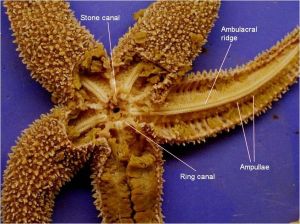 I came across this image of a dissected sea star and had to share it. It does a great job of identifying intricate details of the sea star physiology that are involved with the locomotion and vascular system of the invertebrate.
I came across this image of a dissected sea star and had to share it. It does a great job of identifying intricate details of the sea star physiology that are involved with the locomotion and vascular system of the invertebrate.
The vascular system is part of the circulatory system that helps transport nutrients back and forth across the animal’s body. These echinoderms (a group of marine invertebrates known for bumpy skin and radial symmetry, including sea stars, sea urchins, and sand dollars) begin the movement of their tubed feet with water entering through the madreporite. The madreporite is the wart-like, red or yellow opening in the center of the sea star. It acts like a pressure-equalizing valve. Next, the water will circle 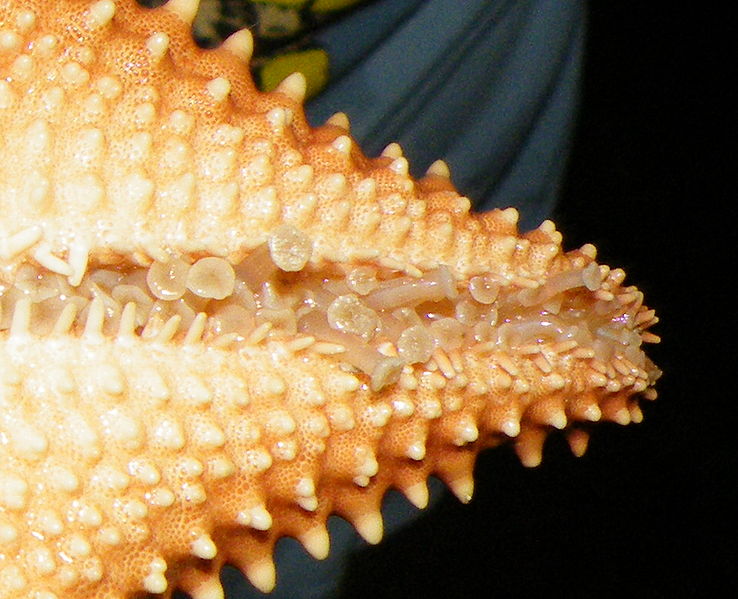 around the stone canal to be distributed to the arms of the sea star. At this point, water goes to the tubed feet and being the act of moving by contracting and stretching. Tubed feet also come in handy when grasping food to place into the mouth of the sea star. For more information and a great image of the madreporite of a sea star click here.
around the stone canal to be distributed to the arms of the sea star. At this point, water goes to the tubed feet and being the act of moving by contracting and stretching. Tubed feet also come in handy when grasping food to place into the mouth of the sea star. For more information and a great image of the madreporite of a sea star click here.
If you have a great question just email info@beachchairscientist.com.
Image (c): top – http://w3.shorecrest.org, bottom – wikipedia.com
What eats sea urchins? Revisited
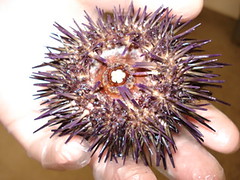 Back in 2008 we brought you some information on what eats sea urchins. After all, it is hard to imagine anything being able to enjoy the spiny echinoderms. Here is an interactive game (you must have Flash) produced by Stanford University that takes it one step further. Try to place which animals and/or plants are eaten by the sea urchin (prey), which animals eat the sea urchin (predator), and which animals and/or plants may not have a relationship with the sea urchin. You see some great similarities of the animals that eat the sea urchin! Come back here and share what you discover after playing the game. Enjoy!
Back in 2008 we brought you some information on what eats sea urchins. After all, it is hard to imagine anything being able to enjoy the spiny echinoderms. Here is an interactive game (you must have Flash) produced by Stanford University that takes it one step further. Try to place which animals and/or plants are eaten by the sea urchin (prey), which animals eat the sea urchin (predator), and which animals and/or plants may not have a relationship with the sea urchin. You see some great similarities of the animals that eat the sea urchin! Come back here and share what you discover after playing the game. Enjoy!
Related articles
- Top 5 beachcomber questions answered (beachchairscientist.wordpress.com)
Top 5 beachcomber questions answered
Take a look at this quarter’s top 5 reasons folks end up on our site. (Due to the amazing power of WordPress I can see what you’re typing into a search that would lead you here!)
2. How do flamingos get their color?
3. What is the biggest fish in the sea?
Anytime you have a beachcombing or ocean related question feel free to email us at info@beachchairscientist.com.
When did life begin in the ocean?
Why does a sea urchin attach seashells to itself?
You may not notice it, but sea urchins have very thin tube-like suction cup feet, just like their close relative the sea stars. These feet are useful to grasp onto pieces of seashells, pebbles, or seaweed to disguise the sea urchin from other nearby predators.
Click on this post to see what eats a sea urchin.
But we’ve only scratched the surface here. Check back often at http://www.beachchairscientist.com for more insight about your favorite beach discoveries.
What eats sea urchins?
The spines of the sea urchins are there for protection but that doesn’t stop the sea urchin from having enemies.
For instance, sea gulls love to grab them at low tide at pick away at them high upon the rocks. Crabs have a feast with the urchins by picking away at their spine to get to the inside flesh. Also, urchins that are found along the ocean floor are preyed upon by rays, sharks, seals, and even otters.
But we’ve only scratched the surface here. Check back often at www.beachchairscientist.com for more insight about your favorite beach discoveries.
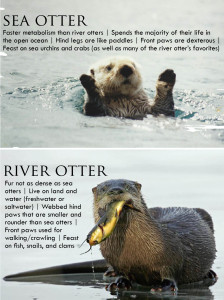



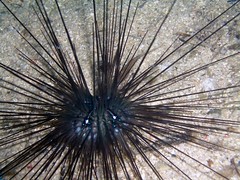







What people are saying …